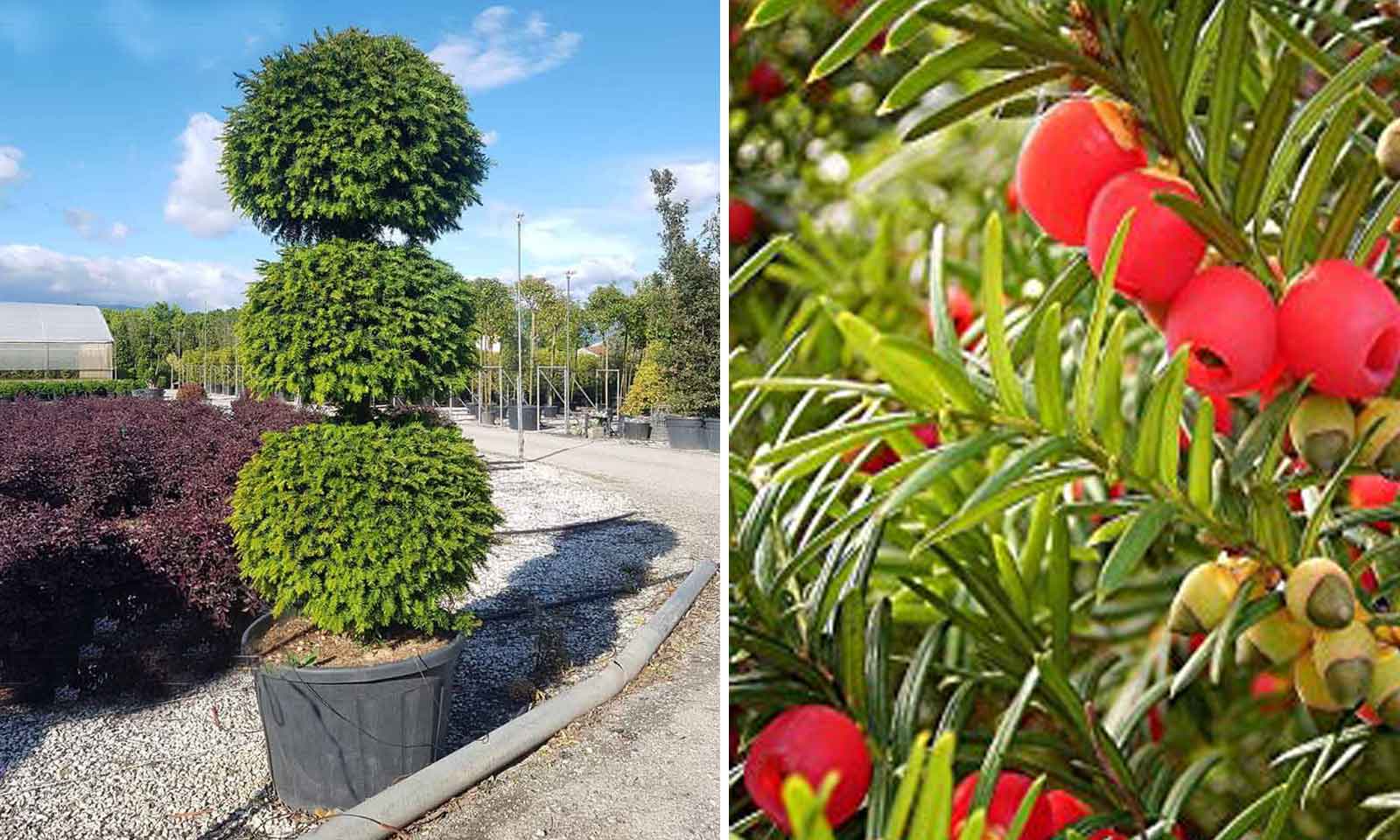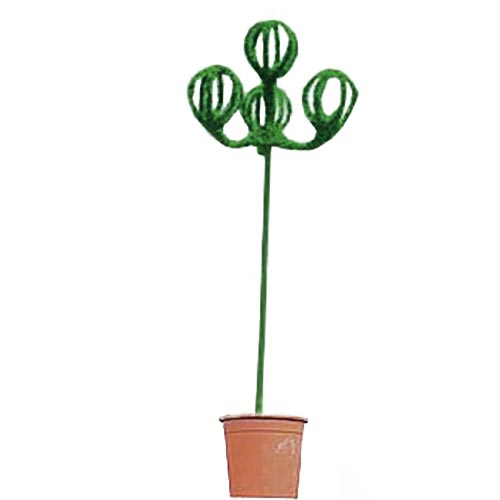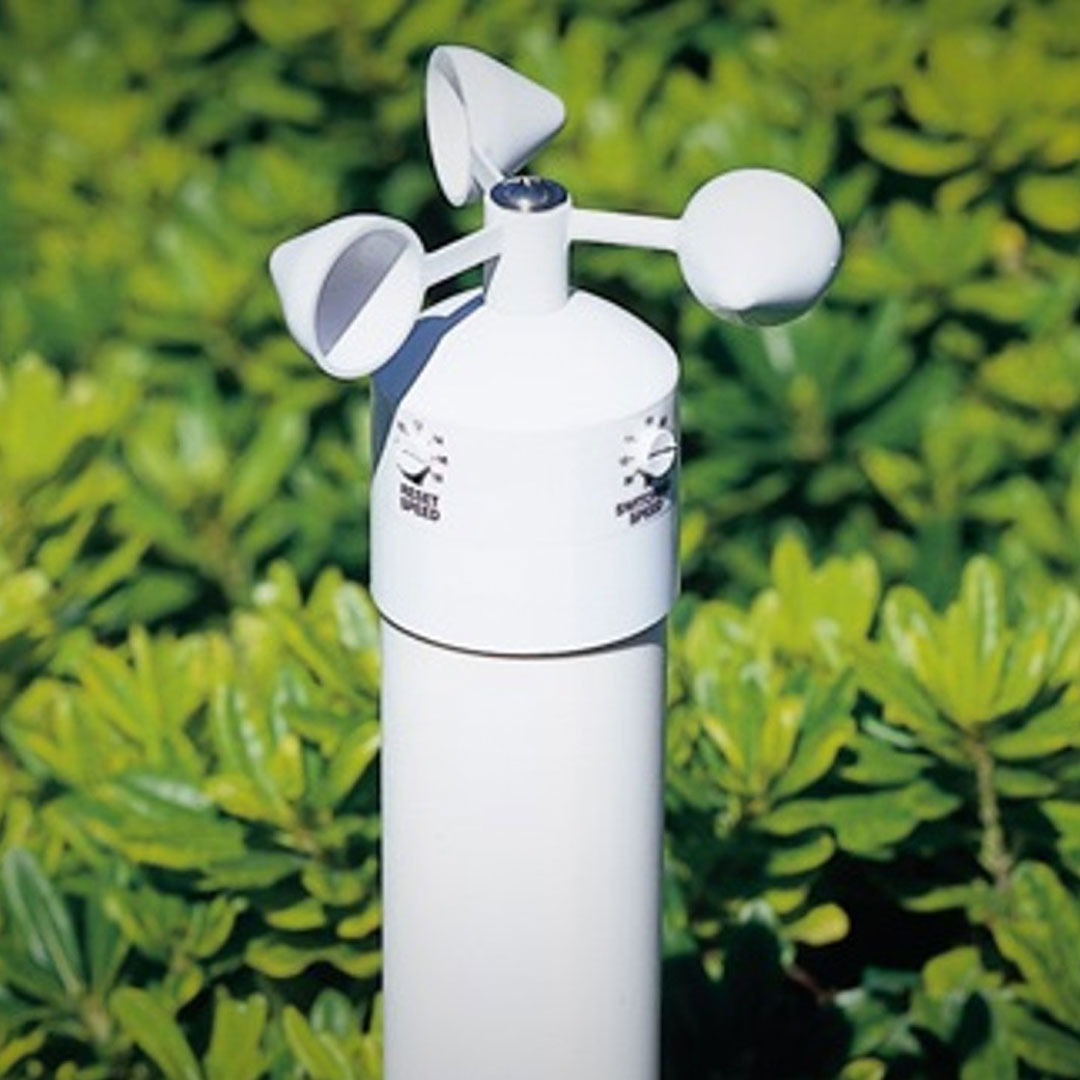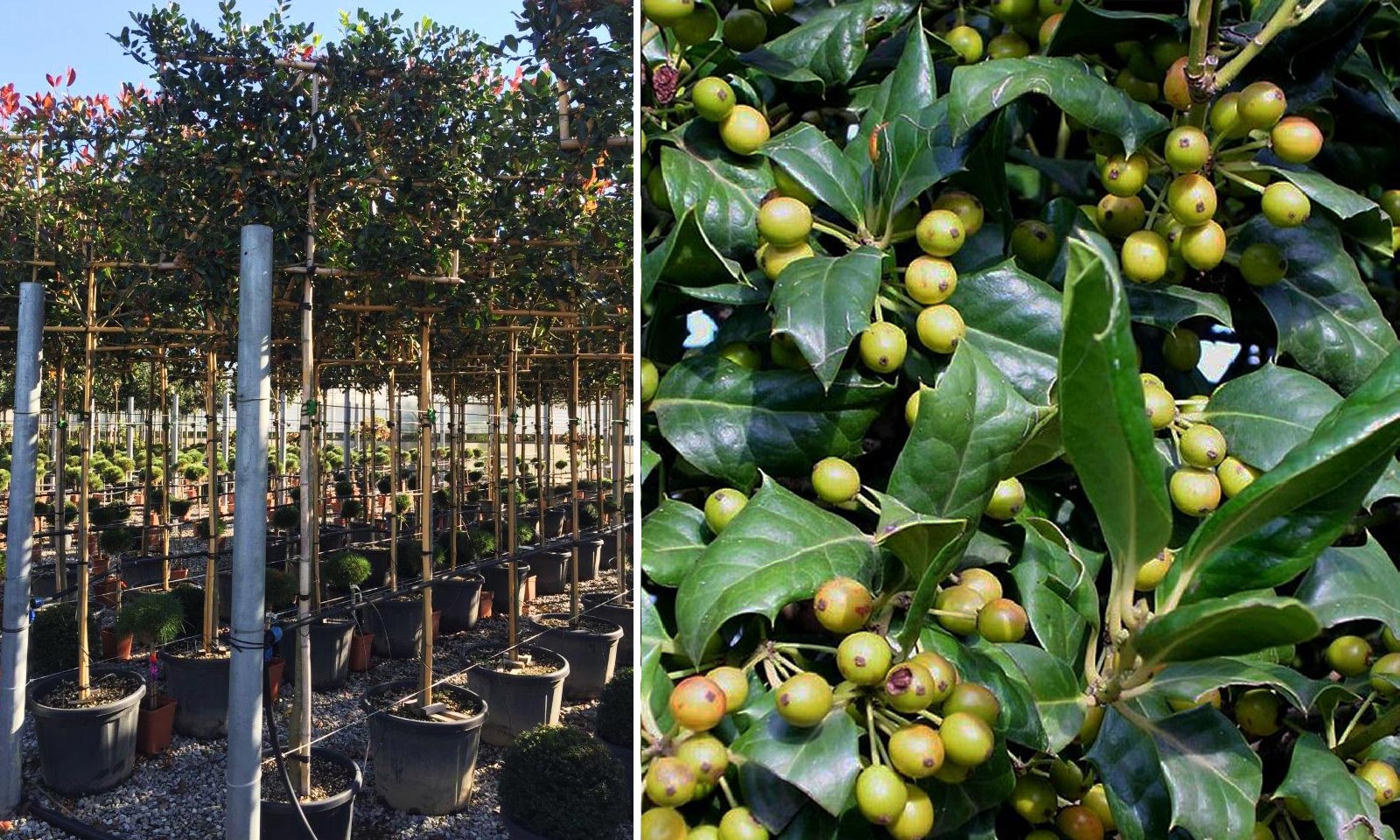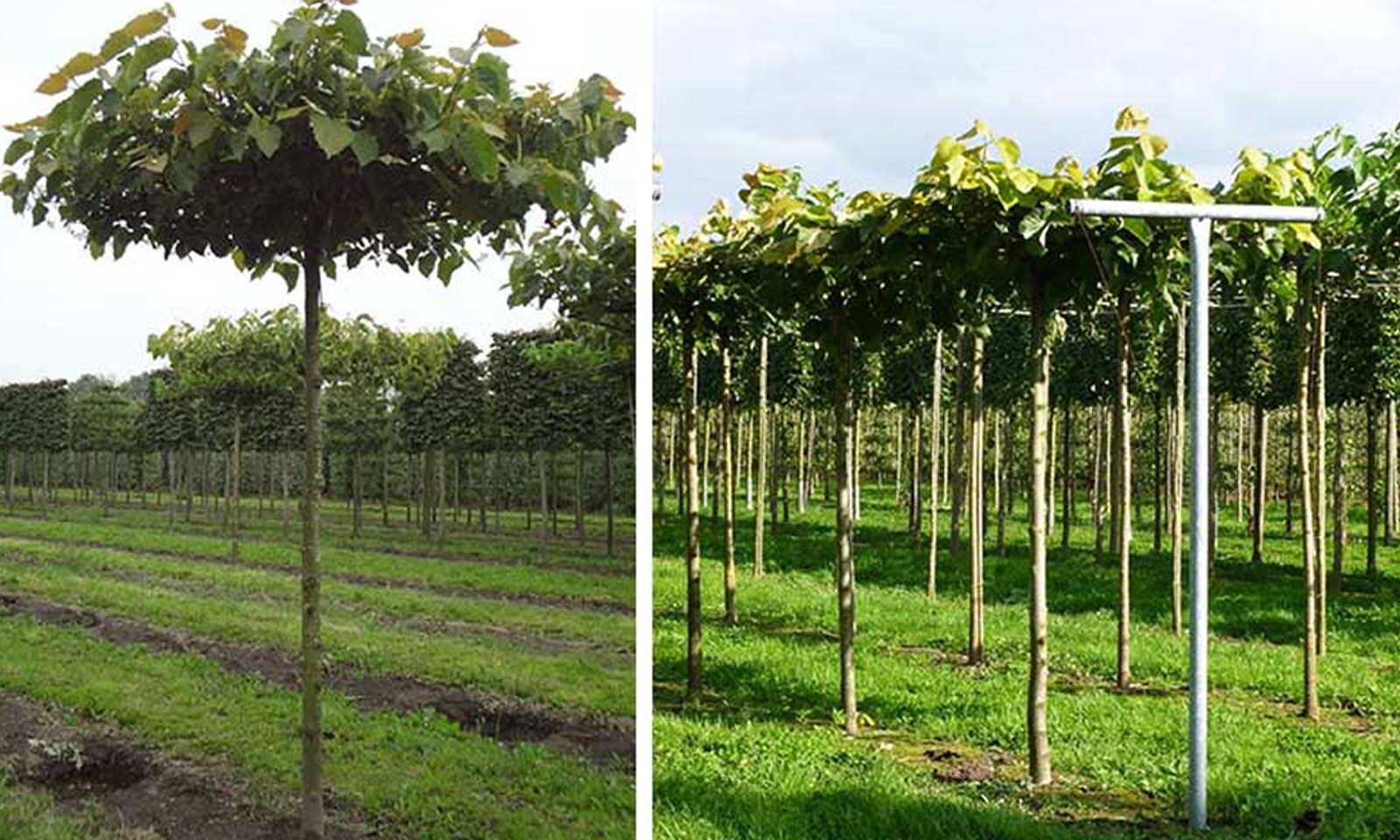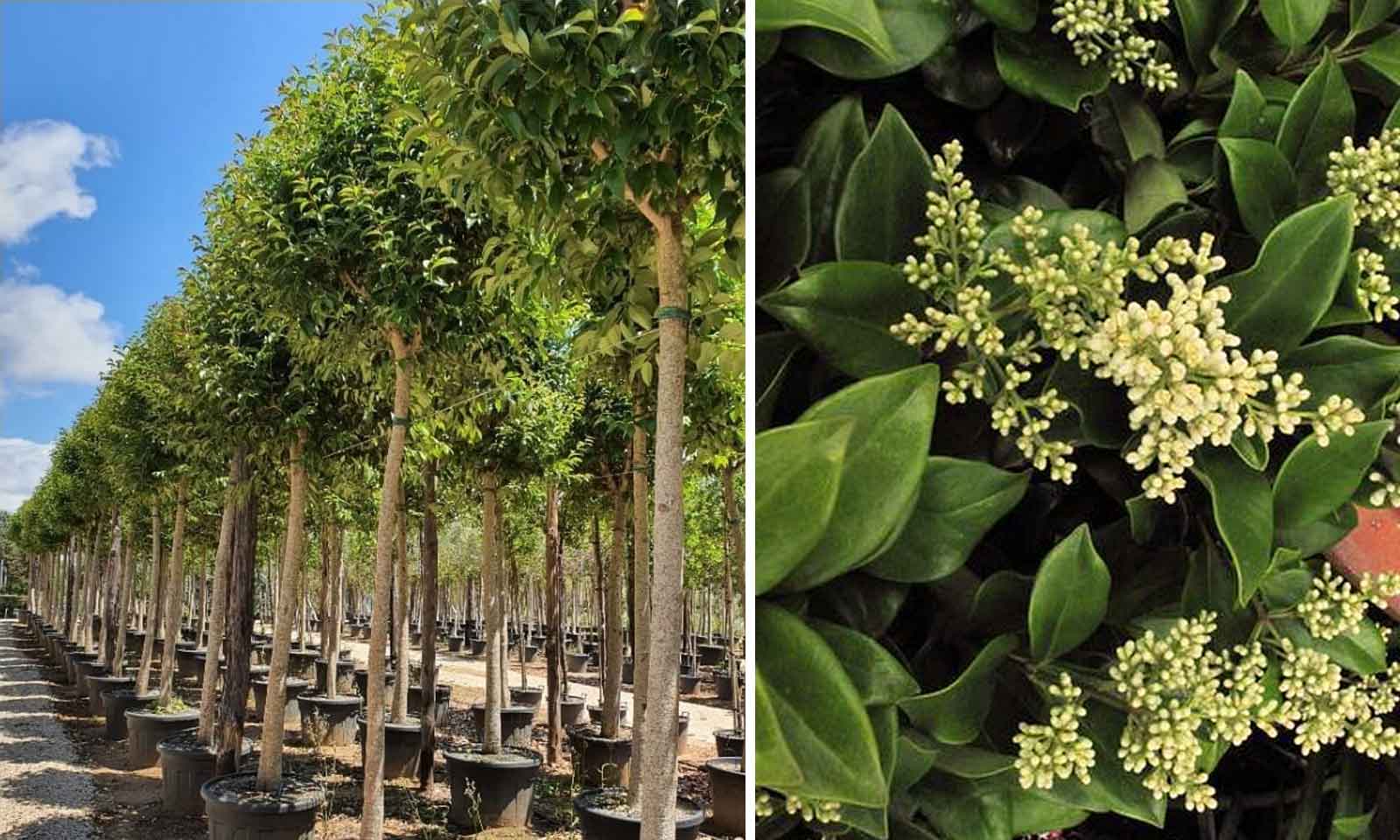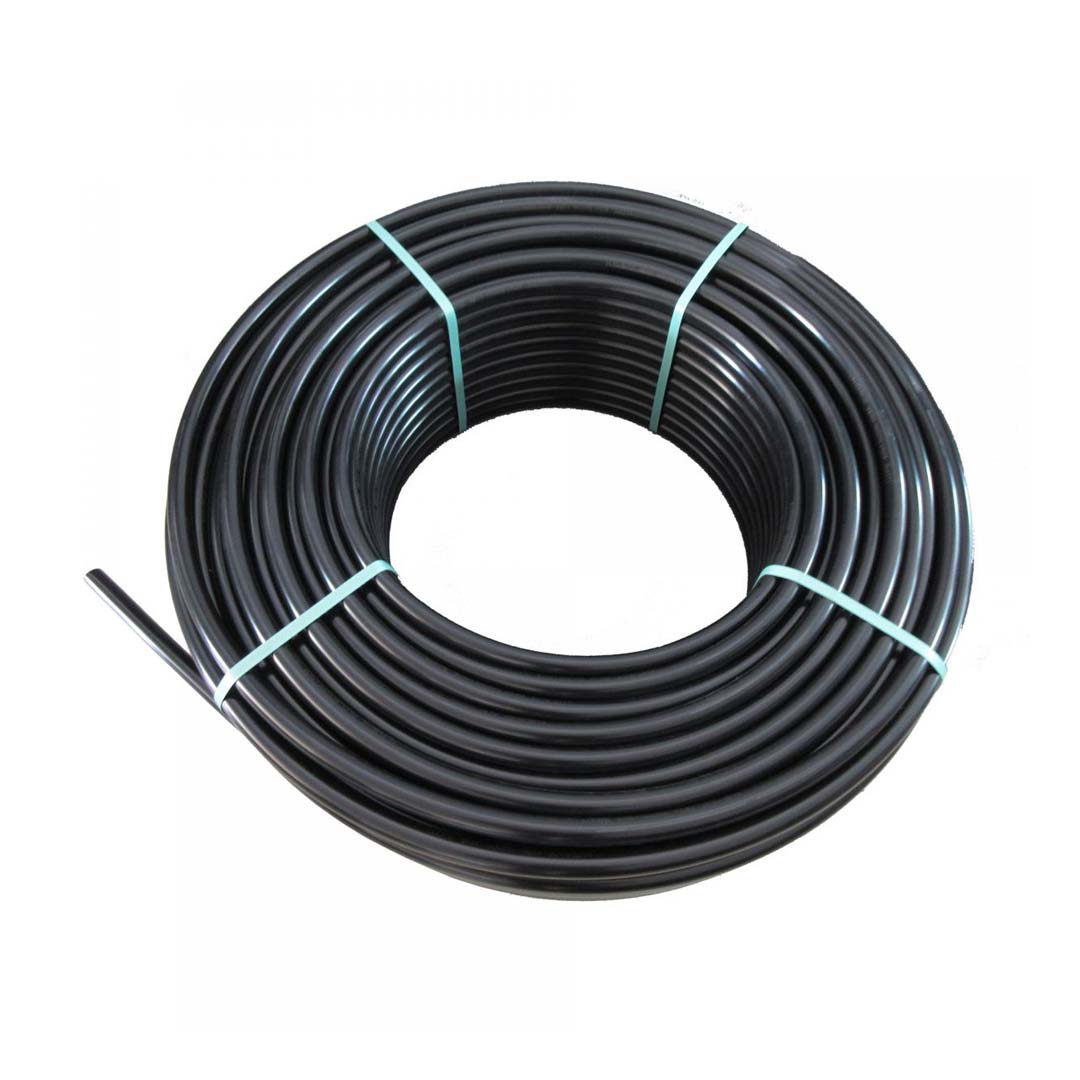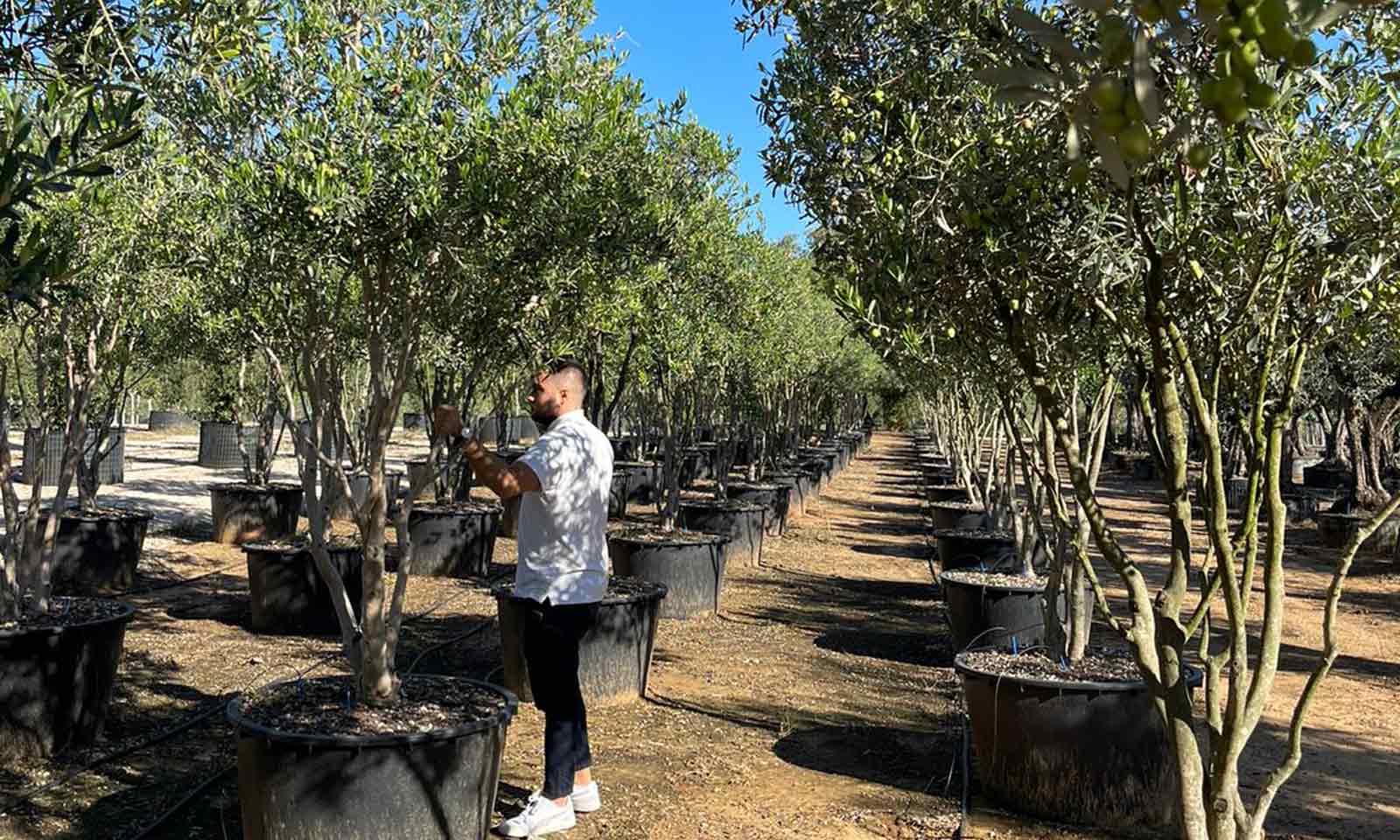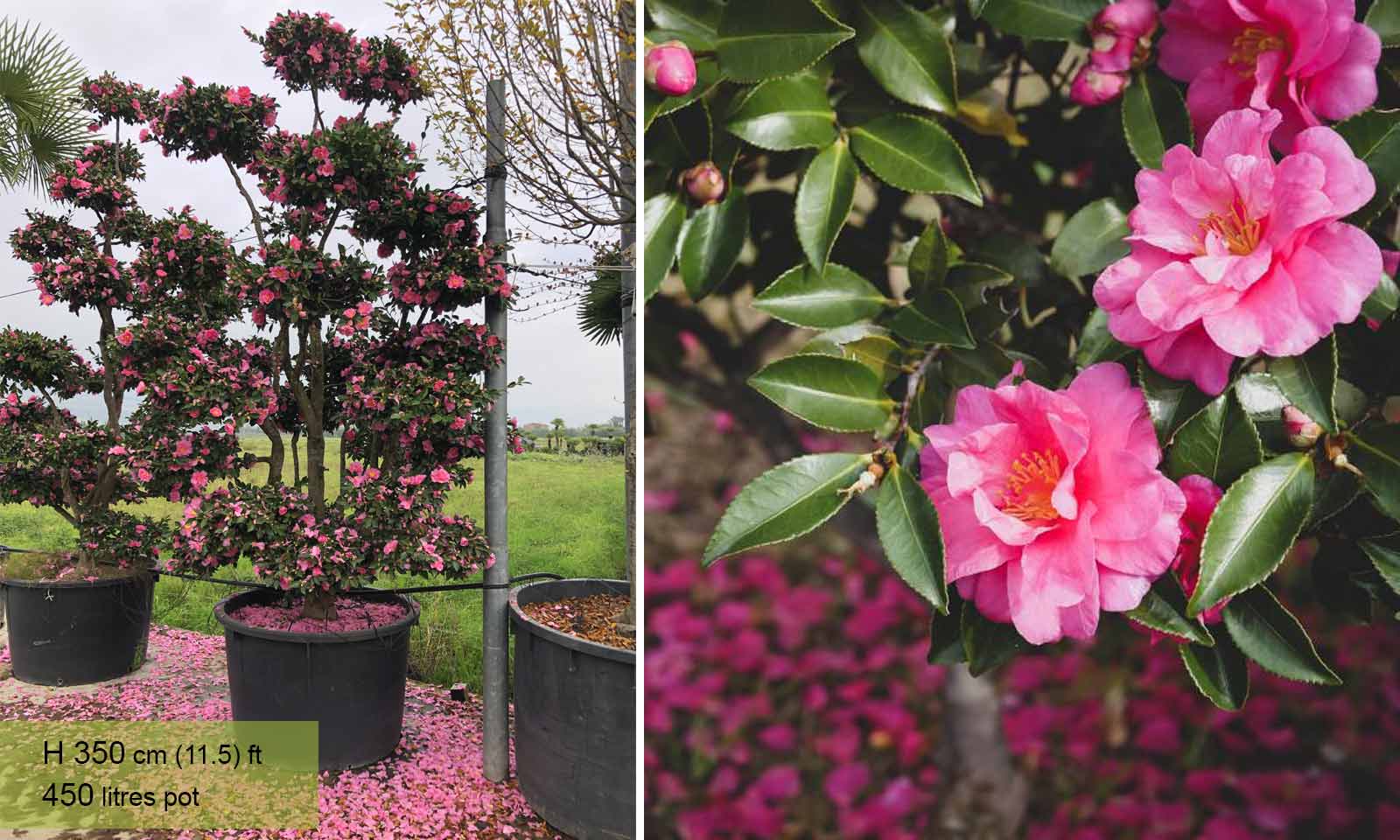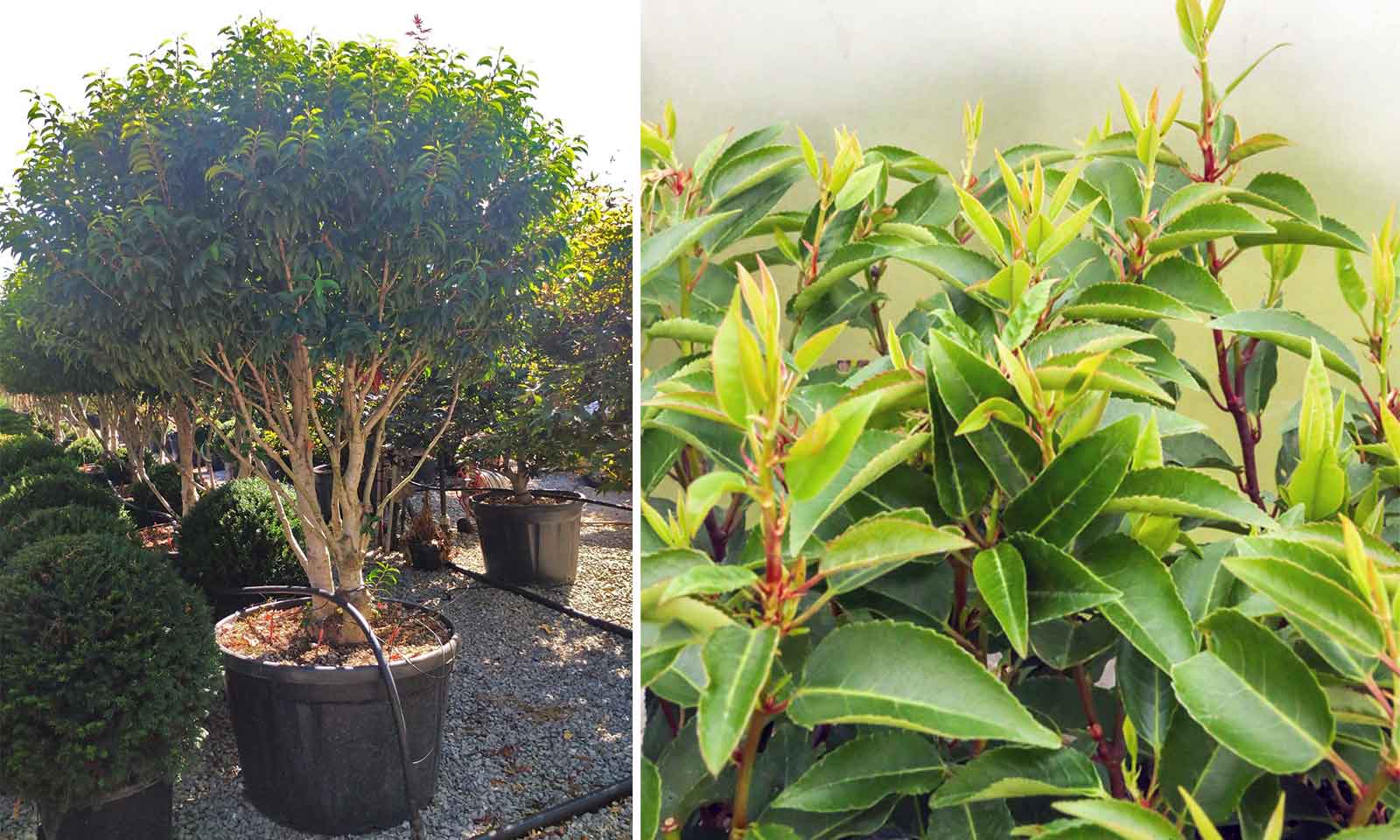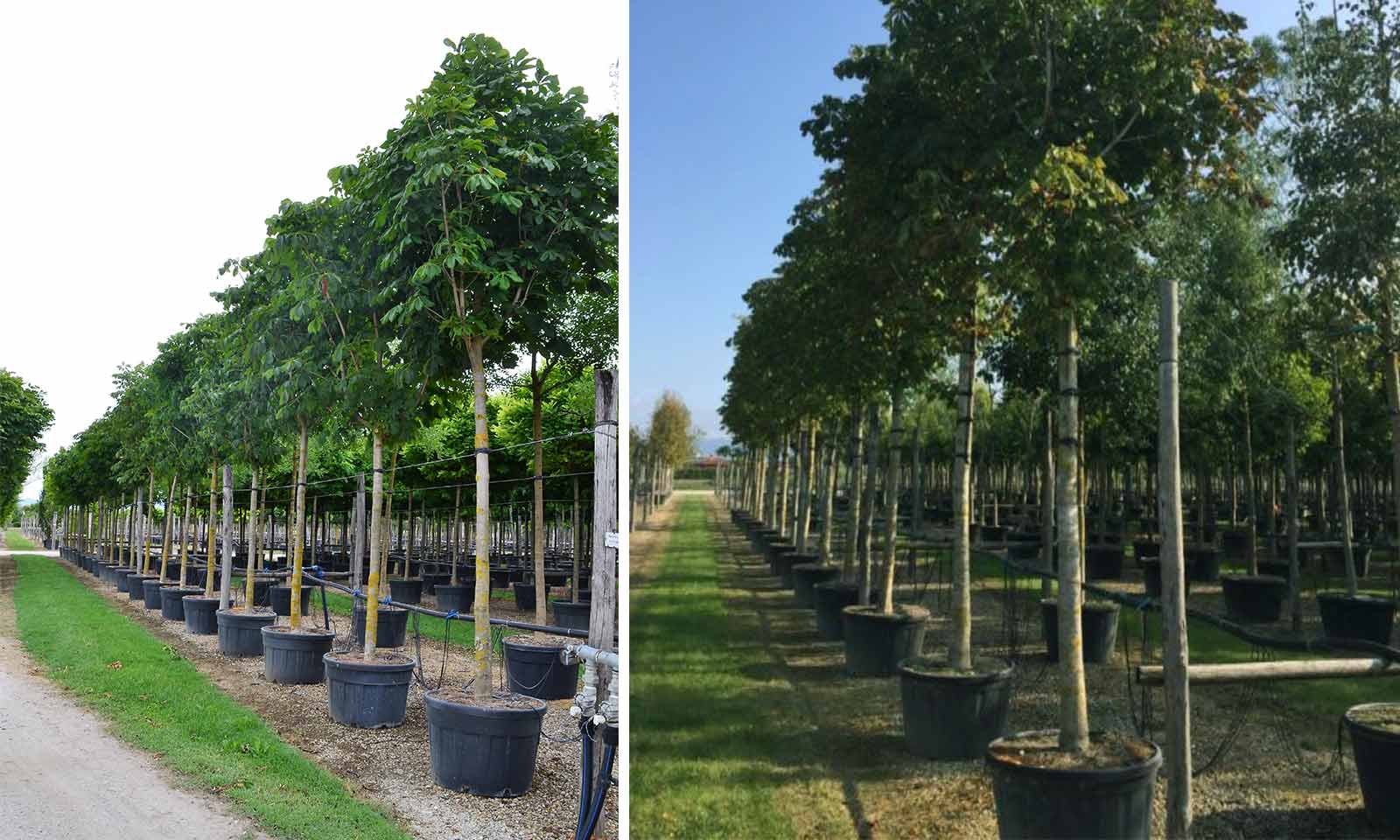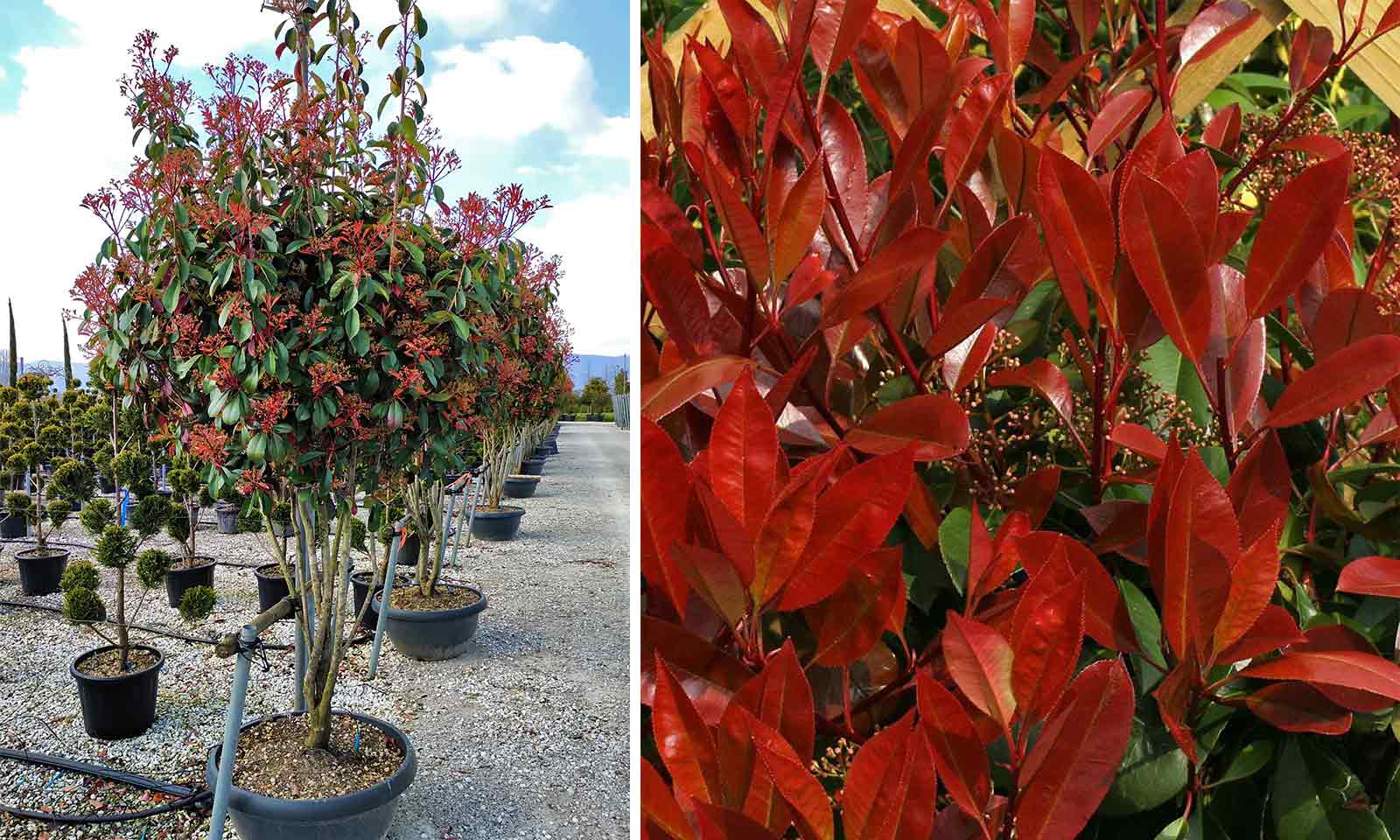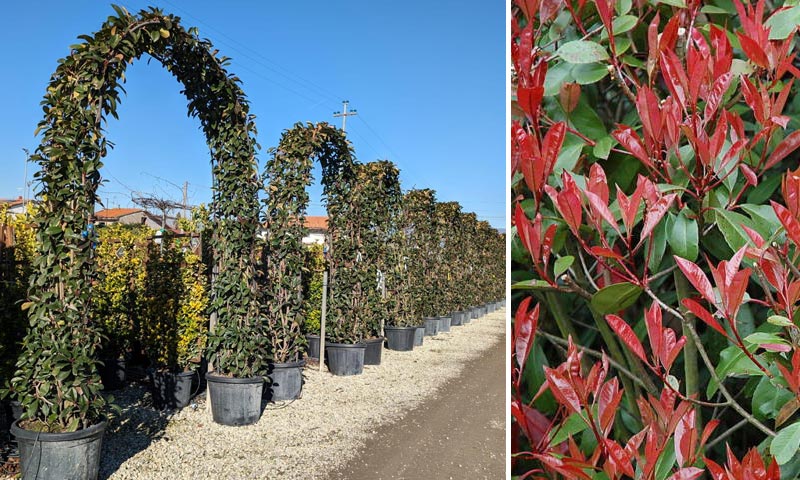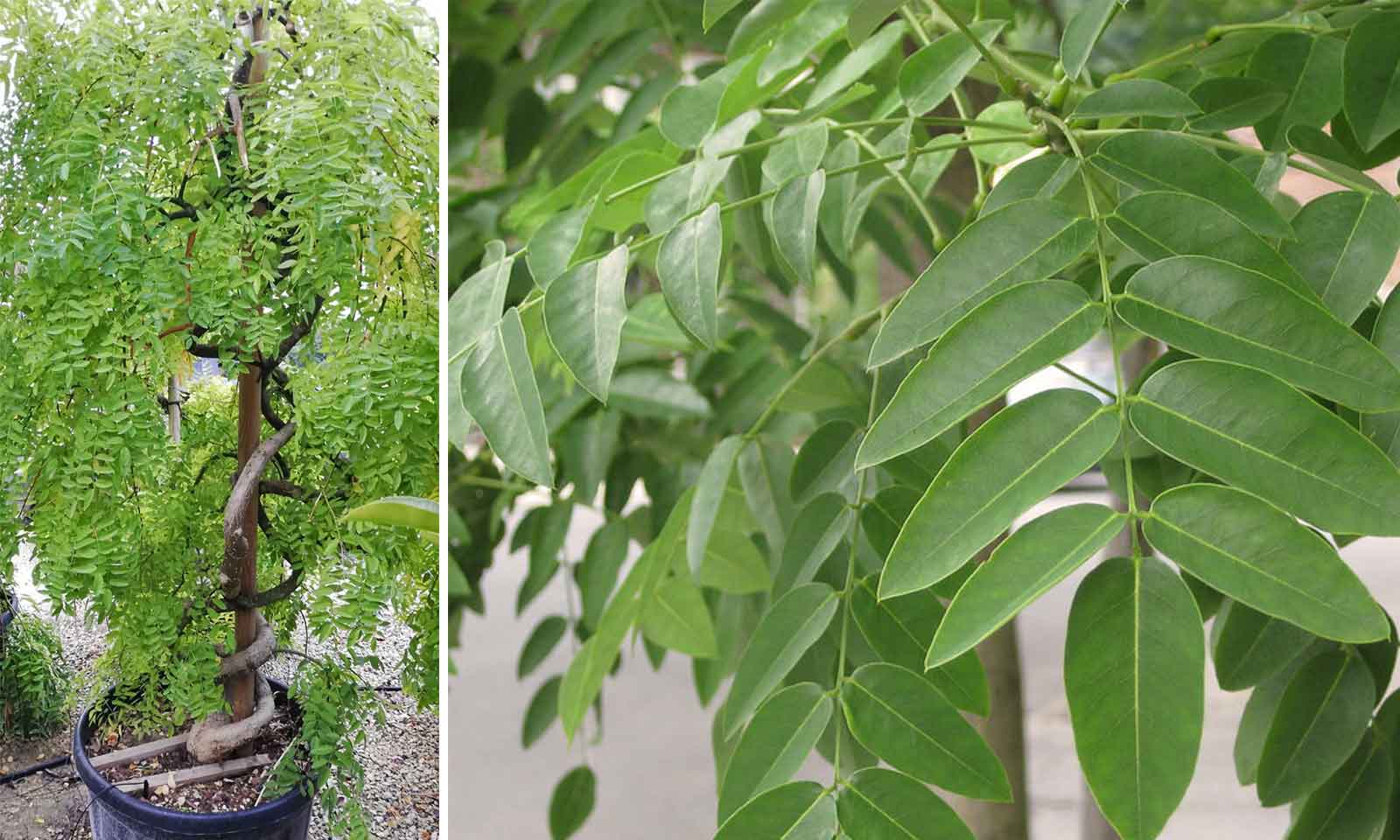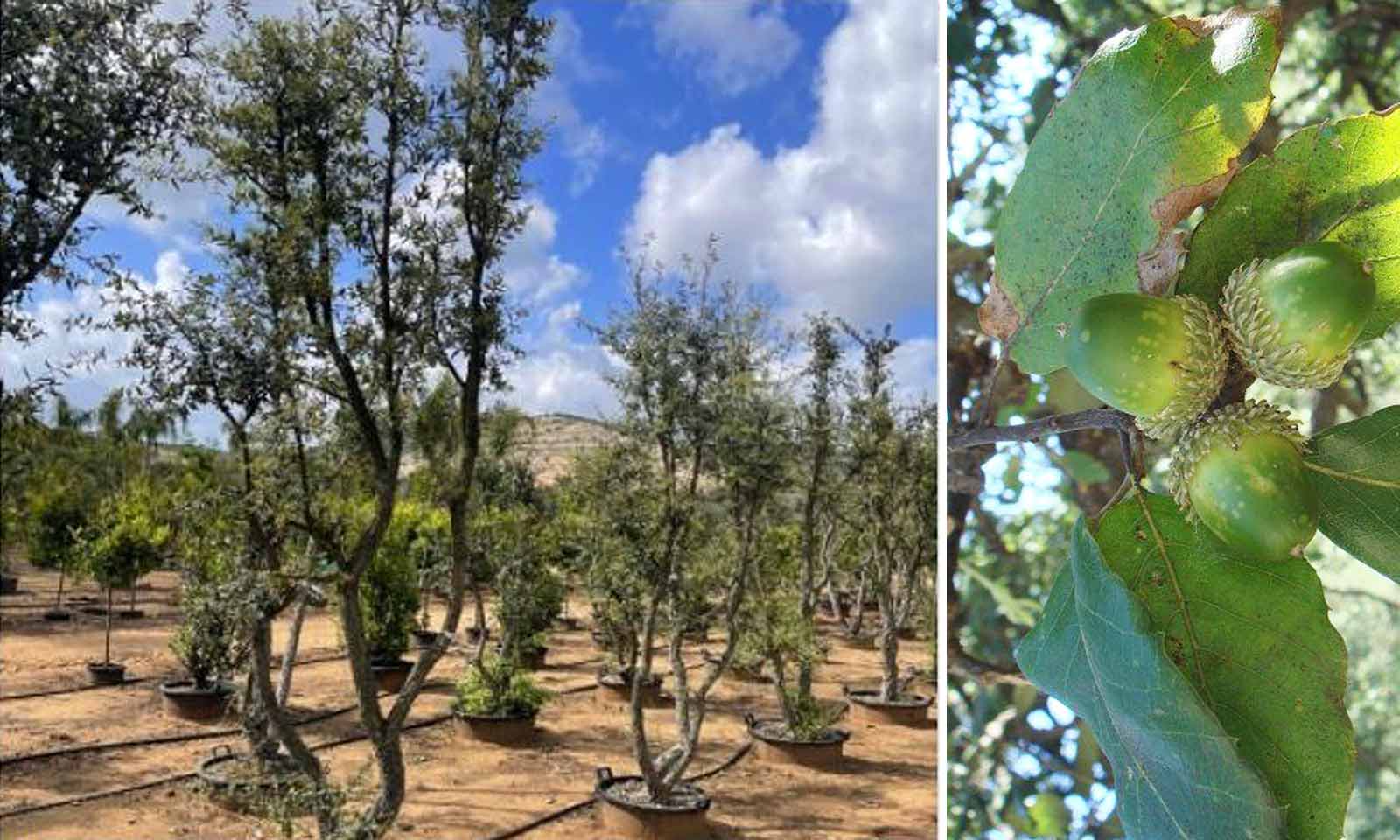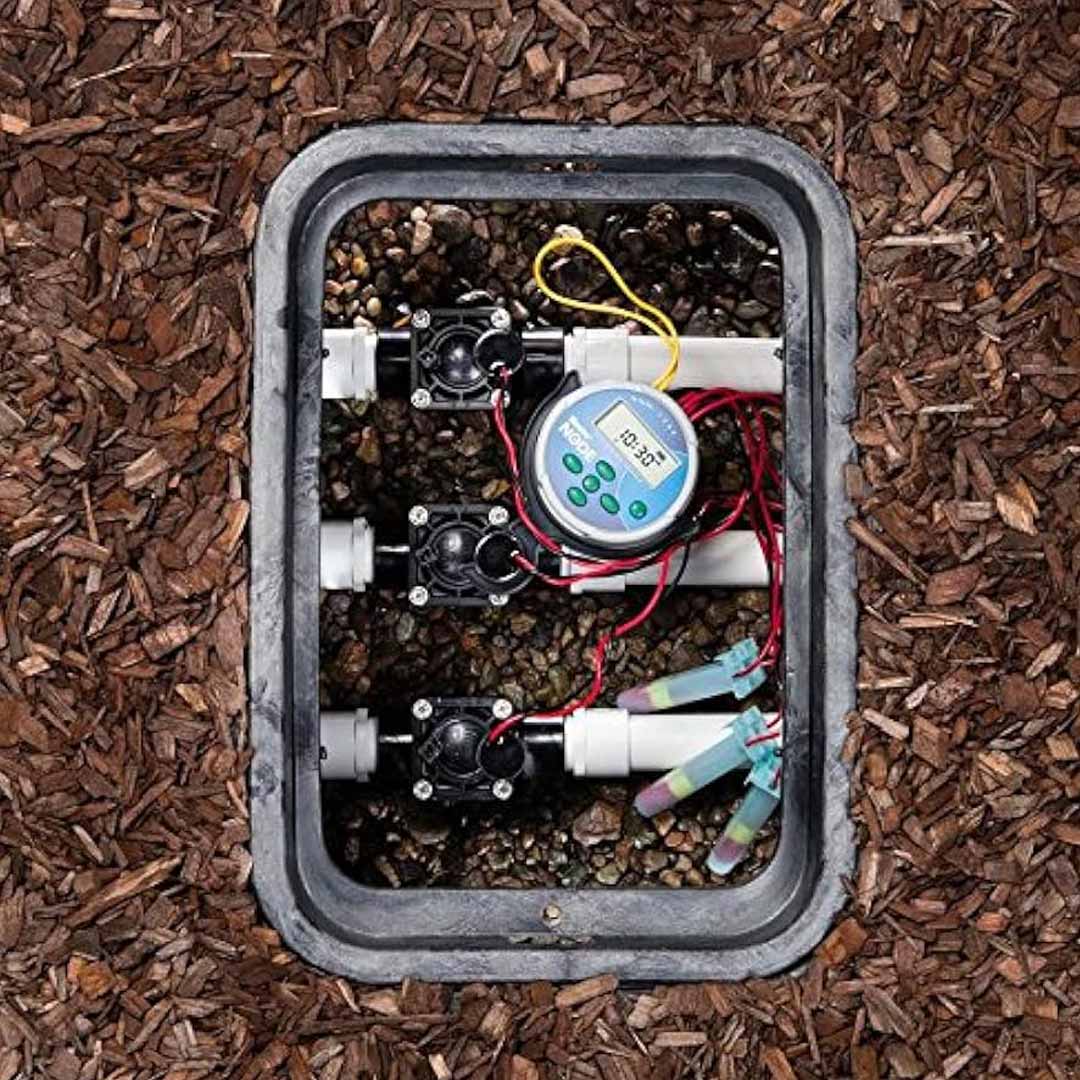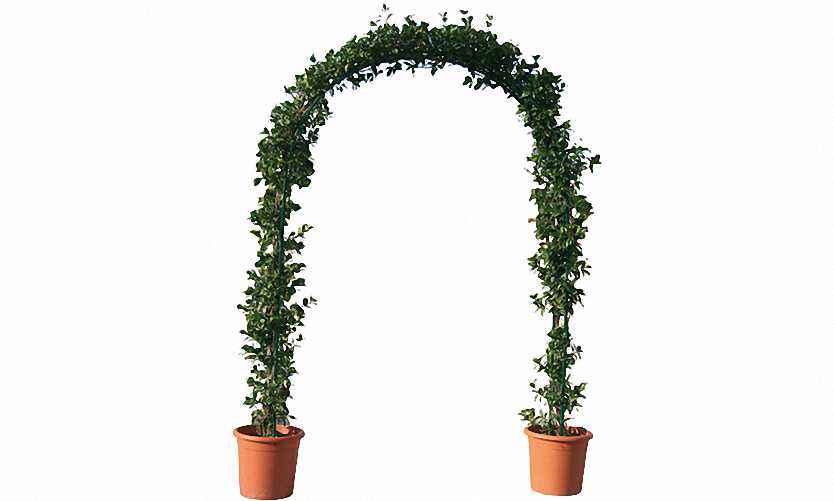Camellia Sasanqua Bonsai Tree
Camellia is a showy and fragrant, broadleaf evergreen, woody shrub in the Theaceae (tea) family native to Japan. The word camellia is derived from Georg Josef Kamel (1706), a Jesuit missionary and naturalist who introduced Philippine flora to Europe. Camellia is a rapid grower and will reach 6 to 14 feet high by 5 to 7 feet wide. The plant requires full sun to partial shade and well-drained soils with a neutral to acidic pH. It will grow in clay, loam, or sandy soils and is slightly salt tolerant. It appreciates shelter from afternoon sun, winter winds, and cold, and—once established—will tolerate drought. This camellia blooms during the late fall and winter, making it a focus of the landscape at a time when many ornamentals enter dormancy. Flowers may be up to 3 inches in diameter and contain a single or double row of petals. A camellia will flower over a period of four to six weeks. In the landscape, Camellia works well as an accent plant, a privacy hedge, or a tall foundation planting. It blooms in a different season than its cousin C. japonica.
Product Dimensions
325-350 cm: 450 litre pot
Latin Name: Camellia Sasanqua
English Name: Sasanqua Camellia
Species: Theaceae
Foliage Type: Evergreen
Foliage: Green.
Flower: Pink
Flowering Period: Autumn, Winter
Suggested Location: Outdoor.
Suggested Soil Type: Moist, but well drained. Loam, clay, sand
Suggested Exposure to Sunlight: Full sun, partial shade.
Suggested Exposure to Weather:Partial shade and protection from frost.
Hardiness Rating: H4. Never below 10F. Can be grown successfully indoors, but needs cool nights (between 40-60F, but 50-59F is best) in winter. Likes ventilation, but should be kept sheltered from strong winds.
Suggested Uses: Containers. Specimen. Ornamental. Topiary. Rock Gardens. Courtyard styles.
Maintenance: Tolerate hard pruning in Winter or after flowering. After flowering, remove spent flowers and trim to shape. Camellia buds back easily, even from the trunk, after hard pruning.
Growth Habit: Bushy/Upright.
Growth Speed: Fast
Starting Height: 350cm (11.4 ft)
Final Height: 600cm (19.7 ft)
Final Sideways Spread: 400cm (13.1 ft)
Delivery Cost: This is calculated based on the total size, weight and quantity of your order, as well as the location of your delivery address. You will see the final price at the Online Checkout Page (before making payment). Our website will automatically calculate the lowest possible delivery price and apply discounts to orders of certain products – giving you the best value delivery every time!
Please note that high-volume orders will decrease your delivery costs significantly by spreading the price across multiple items. Visit our Delivery Policy page for more information.


